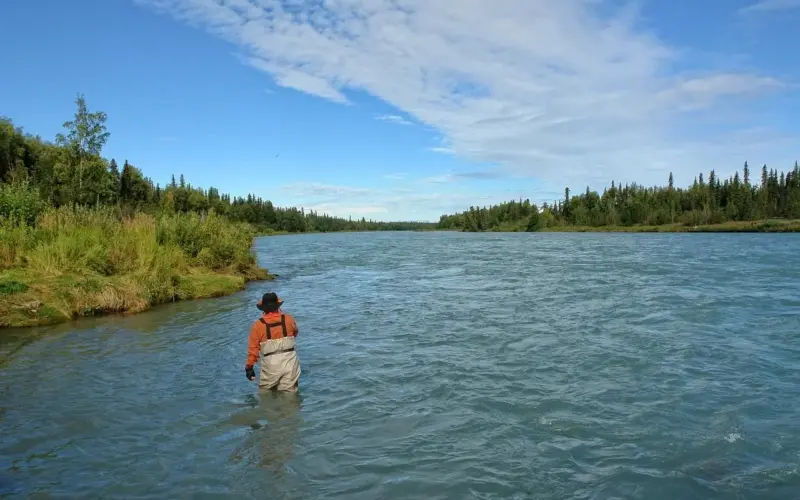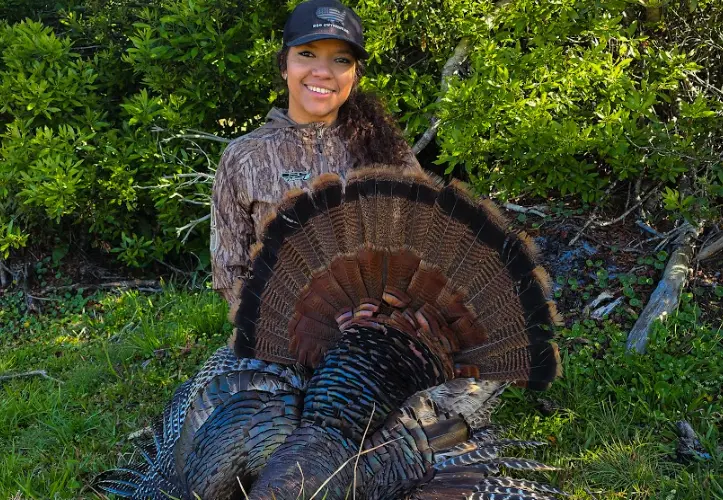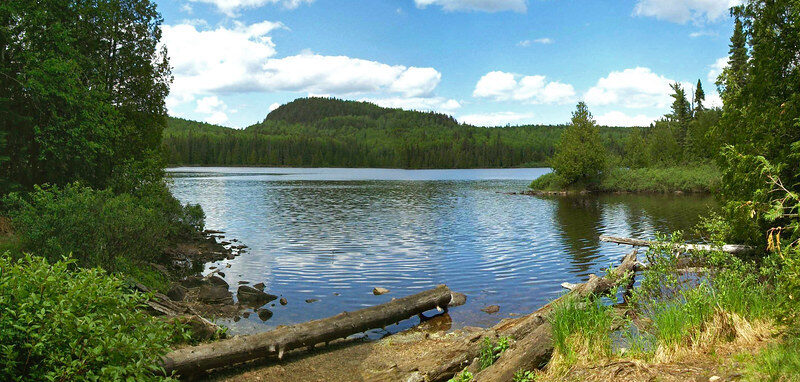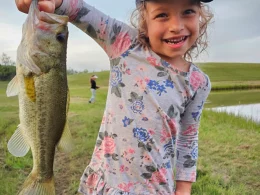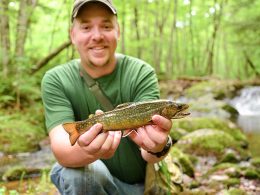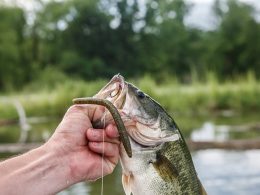The seasons are changing, and in Alaska many of us are starting to remember why we live here. It can be easy to forget as winter drags on for what feels like forever – the combination of cold, snow, and darkness force us to question some life choices and if a more mild climate wouldn’t be a better option.
Of course we can think back to long summer days spent on the beach or in the mountains. We can do our best to place ourselves back on the porch enjoying a beer late into the night while it still feels warm and the sun still hasn’t quite disappeared.
But right now that same porch may be covered in snow, and it is dark well before dinner time. It’s not that we don’t realize those days are coming, but the feeling and sensation is detached, as if the blanket of winter has numbed these experiences and won’t allow the memory to fully load. I can remember a specific afternoon getting home around 4pm and it already being dark. I had a very clear thought “In a couple of months this same time will feel like the middle of the day”. Even though I knew this rationally, the idea seemed unfathomable.
Eventually though, after many thoughts just like that, the memories are starting to come back into focus. Sunrise getting earlier and sunset getting later every day. Gaining a few minutes a day of sunlight might seem silly to some people, insignificant really, but it’s a pretty standard snippet of conversation here. Along with the weather, it seems to be a common small talk topic – even being shared on the local public radio station.
With the increase of sunlight comes other signs of spring, some more subtle than others. The first call of a Varied Thrush can cause a lot of excitement. In areas that receive a lot of direct sunlight the first blades of grass are starting to break through the snow free soil and provide new life, an often used but apt metaphor for this time of year. Ice in the rivers is breaking up and clearing out. All of these are happening now, minor changes that give us all hope. For me, the biggest sign of spring – and what finally brings my sanity back – are the first fish returning to the rivers.
Table of Contents
Finding The First Fish
There is a sense of excitement, almost palpable, knowing that soon we could be experiencing the addictive feeling of a strong tug on the other end of the line. The smallest chance of finding the first fish is enough to get us out sooner than we expect the fish to arrive. The anticipation is hard to describe, just getting a perfect drift or making an excellent cast through a favorite fishing hole can be enough to send shivers down your spine – your brain almost feeling the pull, every second filled with the possibility of a hit. Even though it might still be a little too early, you know that eventually, one of these casts and one of these small moments, it all will come together A hook set – made hundreds of times before only to unsnag from a rock or pull a stick – will finally have some weight to it and feel alive. That split second, the realization that you’ve hooked something swimming, not inanimate, is one of the best feelings in the world. At that point, it doesn’t really matter what happens next.
If the fish is landed, it’s rewarding and the following celebration is bigger than usual. But even if it isn’t, even if it’s lost almost immediately (keyword almost, you don’t want to leave any doubt) all of the optimism and joy and every other good feeling comes rushing back…after all these months we’re back to the fishing season. Obviously losing the fish comes with some baggage. You’ll hear it from your friends, usually in the form of some joke about being rusty or forgetting what you’re doing, but none of it is enough to ruin the moment.
Warming Waters
As the water starts to warm, salmon fry will begin to hatch from eggs deposited and buried under the gravel the previous summer. All of the reproducing salmon are now deceased, their nutrients helping to sustain the diverse ecosystem and the next generation is making their way into the world. Seeing the fry is always a welcome sight, and it also means another important sign of spring is on the way…watching Dolly Varden slap the surface in feeding frenzies. Dolly Varden, or dollies, are voracious feeders, seemingly insatiable and overly aggressive – which is a gift for anglers that have been waiting months for some action. It’s common to see areas of water that look like it is boiling, schools of dollies rising and breaking the surface as they attack salmon fry. If you are lucky enough to find an area where this is happening it means you are in for some fun.
Casting anywhere near the commotion with just about anything that flashes will produce a hit. While it might not be the most technical type of fishing, it sure is a good time. They are strong fighting, beautiful fish and will absolutely bring a smile to anyone around with a rod. One day, a few years back, a friend and I were kayaking down a river after a slow day of fishing.
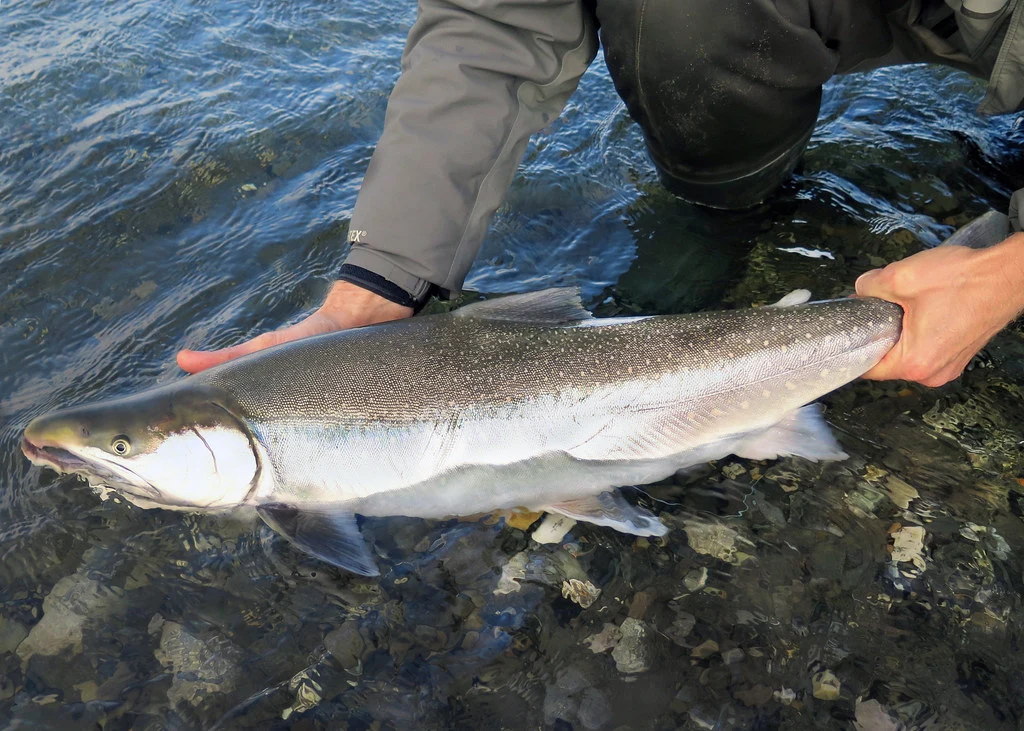
We hadn’t had much luck and were on our way back to a cabin to drink some whiskey and pontificate on all the reasons we hadn’t been able to find the fish that day (none of them having to do with us, we were sure). Paddling down, there were some splashes near the bank. We both caught the disturbances out of the corner of our eye but didn’t think much of it as splashing is not uncommon with the number of ducks and other water birds that are always around.
Usually though, the birds will pop back up. Now fully focused on the area, we realized no birds were coming up, only more and more splashes…we knew we had run into a feeding school of dollies. Quickly beaching the kayaks we waded out with small fry patterns ready to go. Cast after cast we were getting hits, to the point that we decided to reel in while the frenzy was still going. Satisfied, we paddled away – knowing we didn’t have to tell anyone we got skunked. I think it made the whiskey taste a little bit better that night.
Sea-Run Cutthroat Trout
Along with the dollies, sea-run cutthroat are also beginning to make their way out of the salt and into the freshwater right now. These too, will be feeding on the plentiful salmon fry but because they are in smaller schools it takes a little more work to find them. This time of year they also have another goal in mind, to make it to their spawning grounds. Unlike salmon who stop feeding as they make their way to spawn, cutthroat will continue to feed making them a fun target species. Similar to their landlocked cousins, the sea-run variety will have the namesake red markings on the bottom of their jaw. They are very unique fish and have a beautiful, almost mystical, look to them. Marked with many spots, they range from a silvery to almost blueish hue with a faint stripe down the side. When hooked, they have a habit of coming out of the water which makes for a good show and a lot of fun.

Steelhead
Steelhead, the final fish in this first arriving wave has been elevated to the status of a legend. They are the king of spring, and many a fisherman have gone down the rabbit hole of becoming completely obsessed. These are the fish you dream about, the ones you will tell stories about for years, and the one that got away will probably haunt you forever.
Unlike dolly varden, steelhead are notoriously finnicky and difficult to hook, and even more difficult to land. Like the cutthroat, they are here to spawn and while they will feed while in freshwater, it isn’t their main focus. Landing a steelhead, especially a wild one like we have here, is an accomplishment and each one is special. The runs are small, and different rivers in the same area may have slightly different timings. If you are lucky enough to arrive when the fish are in the river, you’ll need even more to get one to bite, and even more to bring it to the net.
They are big, strong fish that will test your rod, reel, knots, biceps, and forearms. You might get an aerial show or a blistering run that tears line from your reel and makes you wonder how much pressure you should put on.
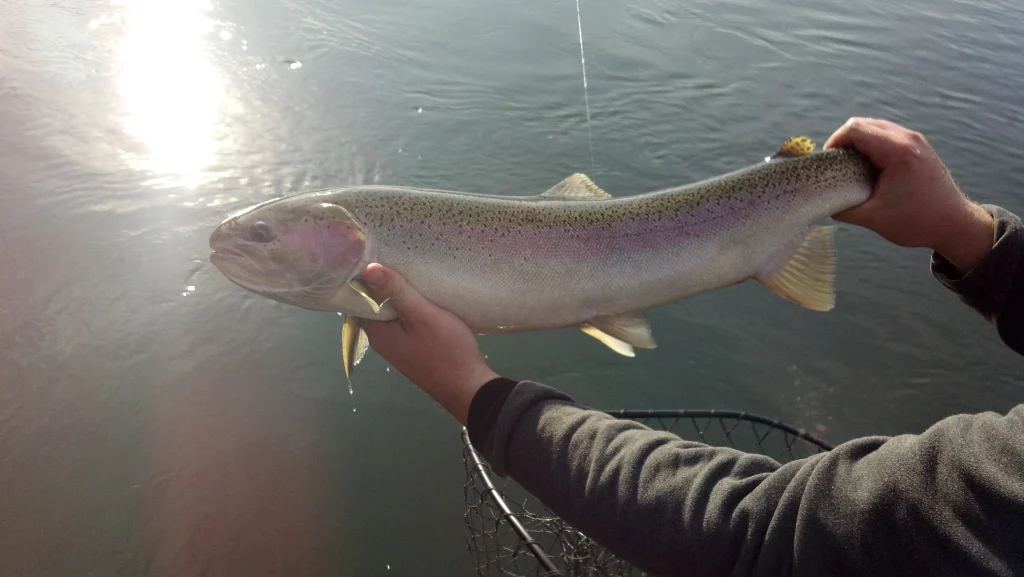
I still vividly remember my first steelhead trip over a decade ago. I was warned beforehand that there was a high likelihood I wouldn’t catch a fish, and possibly wouldn’t even have a strike. My first bite finally happened after a few days of fishing with no action. I felt the tug, set the hook, and wasn’t prepared for what happened next. My reel screamed, not slowing the fish down at all. After it had rounded a slight bend downstream and gotten me into my backing he jumped – a quick chrome flash – and spit the hook. The entire sequence of events was over in less than 5 seconds, but all of those seconds are permanently burned into my memory. To this day it’s still one of my favorite fishing memories (for some reason many of the others also involve losing fish instead of landing them). The challenge is what makes it so rewarding.
Conclusion
It’s easy to get fixated on the fishing with so much opportunity, but it’s important to take in the surroundings as well. Vegetation is coming back, and does so quickly. The peaks are snowcapped and it is common to hear avalanches and snow slides while out on the rivers. Add all of this to the possibility of seeing a deer or moose with a fawn or calf, a bear with cubs, or an eagle flying overhead and you’ll soon realize that the fishing is only a piece of what is changing around you. There is a feeling in the air that can’t really be described, it needs to be felt.
All of this is what makes enduring winter worth it. Anyone who visits during this time of year instantly knows how magical it is, and you don’t need to live on the other side of the spectrum beforehand to appreciate it – but maybe it makes it just a little bit sweeter.

